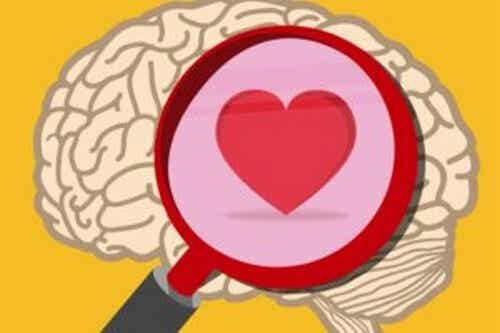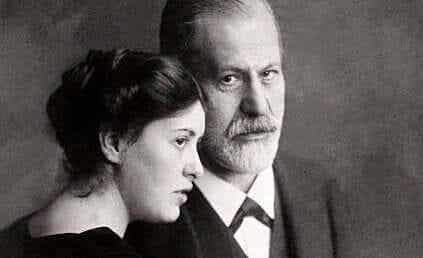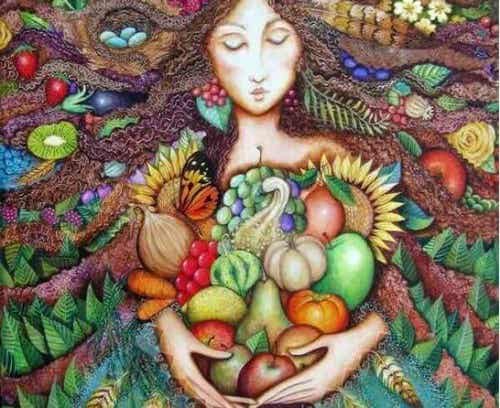When was the last time you cried? There are few experiences that are more cathartic, intense and comforting. So don't hold back - there are four types of tears of joy and all of them are worth trying.

Written and verified by the psychologist GetPersonalGrowth.
Last update: 15 November 2021
Tears of joy connect us with life, with people and with emotions more fulfilling. Allowing ourselves to have these experiences and letting our eyes shine with the splendor of those intense sensations is an act of well-being.
Let's not repress them, let's not try to hide the emotion that the sight of something stimulating or that brings us back to someone we love causes in us. When was the last time you cried, carried away by a moment of happiness?
If your memory has to go too far back to remember that moment, you should consider changing things up a bit. Because tears of joy are the ecstasy of well-being, the essence of positive moments. Promoting those moments is a clear exercise in happiness.
Likewise, science reveals that there are up to 4 types of crying linked to positive emotions. Knowing and identifying them allows us to be aware of the feelings that we should all foster in order to enjoy our existence, the world and relationships much more.
Crying is a cathartic exercise
Why do we cry? If we asked this question to a person we met on the street, she would tell us “why are we sad or because this is how we relieve our pain and inner suffering”. We identify and relate crying to the less gentle side of life, with emotional pain and, of course, with physical pain.
However, here comes the tears of joy and that sparkling glint in the eye when something moves us intensely. The human being cries because crying is part of us and on average we cry more for happiness than for pain.
The study conducted by Dr. Oriana R. Aragón of Yale University indicates that the act of crying has no other purpose than to generate catharsis. Tears intensify certain moments in life and act as natural pain relievers.
It has been found, for example, that enkephalins are released both in crying due to sadness and in that caused by joy. These endorphins have the function of reducing pain and promoting a pleasant feeling of well-being.
We also propose another interesting theory about tears of joy: we produce them because the brain doesn't always recognize the difference between sadness and happiness.
For it both emotions generate states of high intensity, so it activates the parasympathetic nervous system to relax us. To do this, it releases acetylcholine, a neurotransmitter that stimulates our tear ducts.
The different types of tears of joy
Research on this topic has been on the rise in recent years. A new study from Cornell University reveals that there are 4 types of tears of joy. In other words, there are four situations that make us cry for positive emotions.
Tears of affection
Love is the emotion that makes us vibrate and feel everything with more intensity. It is very easy to experience that feeling in which suddenly a word, a gesture, a hug or a shared moment excites us so much that it makes us cry.
The same happens with tenderness, when we hold a baby in our arms, when our pet does something that seems very sweet to us and almost laughing we are surprised to let a tear escape.
The thrill of triumph, the tears of improvement
You have won a match, a race, you have triumphed in a sporting event. Achieving victory, overcoming an obstacle, a specific exam, finding a job after an interview.
Tears of joy can arise even in those situations where, after a period of effort, dreams and sacrifices, we get the desired results. Overcoming ourselves excites us, even intensely.
Inspiration, beauty, tears for what inspires and enchants us
A sunrise over the sea. The aerial views of a natural setting of breathtaking beauty. See our favorite artwork live. Go to the theater to enjoy a show that ends up thrilling us in an indescribable way ...
Go to a concert and listen to that piece of music, with that singer or band that we like so much. Tears of joy are also nourished by aesthetic, natural and cultural aspects.
Tears of joy in moments of shared laughter
There are few pleasures more satisfying than crying with laughter, let the laughter explode in all their roar, together with the people we love. Laughing until our stomach hurts… what's better?
Probably nothing, because authentic fun and those moments in which positive emotions flow together with a sense of humor constitute authentic happiness.
It is worth reflecting on how much time has passed since we last cried in one of the situations presented. Love, humor, inspiration, personal satisfaction, etc.
All these dimensions delineate and establish authentic psychological well-being. We have the power to promote moments of this emotional level, and it is certainly worth living them daily.


























